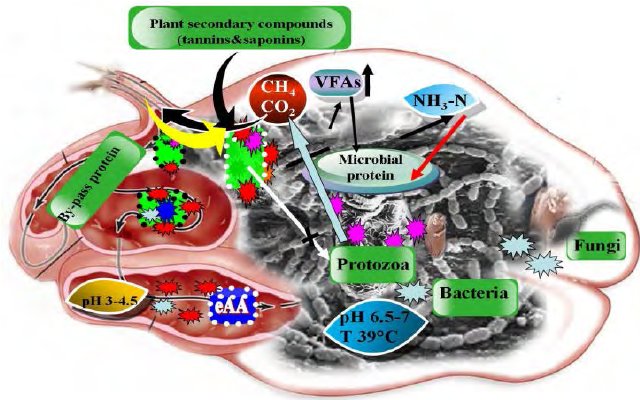Most of the proteins in the animal's diet need to be digested and hydrolyzed.

To pass through the digestive tract and be absorbed into the bloodstream, they must be broken down into their building blocks, amino acids. Most amino acids, like monosaccharides, are absorbed into cells through a sodium pump. Amino acids are sourced for the body from several origins:

Endogenous Proteins
Endogenous proteins are proteins with an internal origin, obtained from the breakdown of epithelial cells shed from the digestive tract. These cells are digested by digestive enzymes. The formula for calculating endogenous protein is: (4.72 × weight of dry matter in the diet in kilograms) (Dairy NRC, 2001).
Feed Protein
This protein is obtained through feeding. Generally, proteins that can be metabolized are consumable by the body. According to the 2001 NRC, metabolizable proteins (MP) are sourced in three ways:
Microbial protein produced in the rumen.
Protein obtained from food that is not consumable by rumen microbes.
Endogenous Proteins
In the next discussion, we will talk more about "Protein Management in Animal Nutrition."

